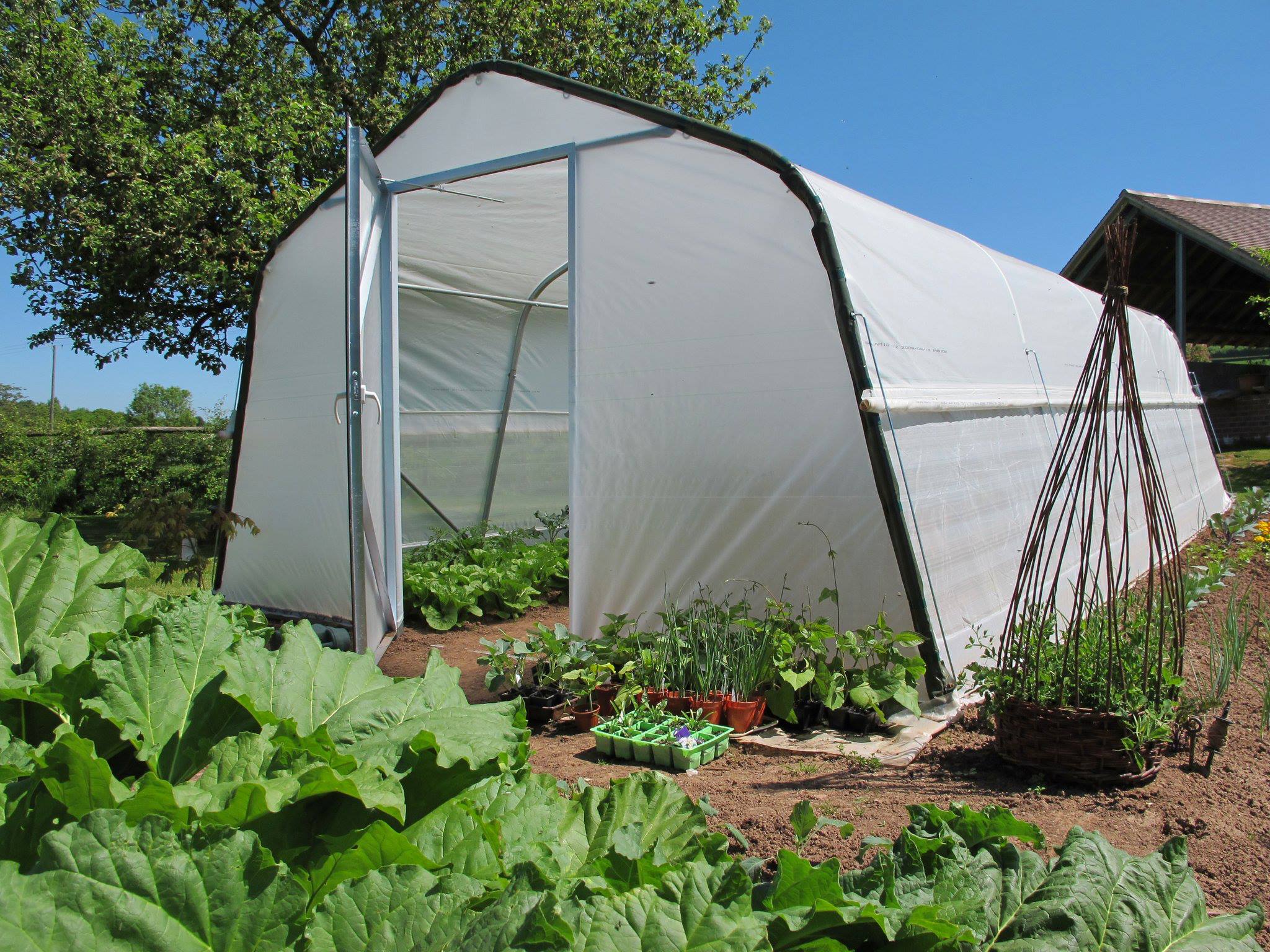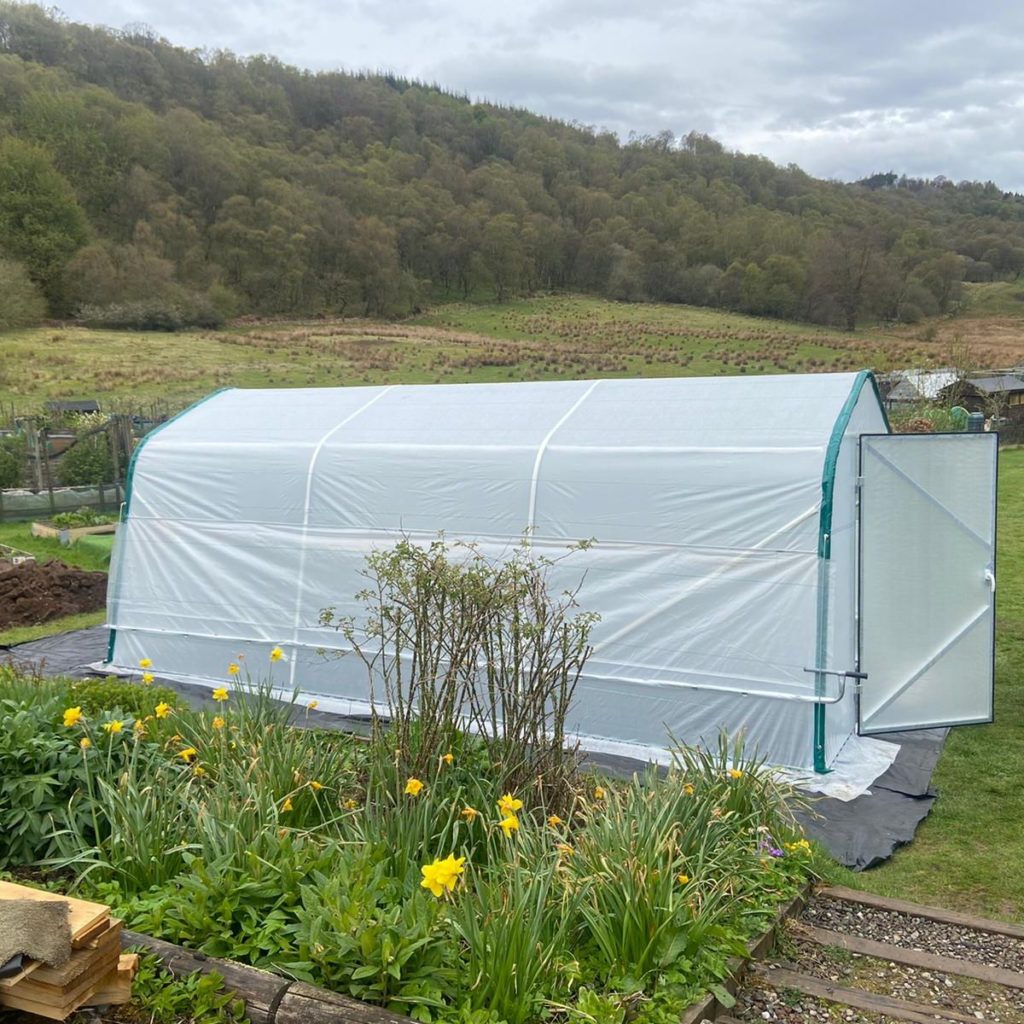
Polytunnels for Windy Sites
A really important consideration when it comes to purchasing a polytunnel is to make sure they are of good quality and can face the elements such as wind and rain. Having a high-quality, Haygrove garden tunnel will benefit you when it comes to placing a tunnel in a potentially windy location, as they are far less likely to become damaged or be blown away due to the quality.
HAYgrove Garden Tunnels in WIndy Locations
It’s a common misconception that it’s impossible to have a polytunnel in a windy location. We have sold tunnels to areas in the Scottish Highlands and to many windy coastal towns. Lower-quality polytunnels will not hold up in the wind because they’re not built to last so make sure to do your research before making a purchase.
Our windproof polytunnels
Our Garden Tunnel frames are made entirely from galvanised steel including doors, side vents, and the base anchoring system. Our polytunnels have steel anchors that are driven at a 45° angle into the ground. Each anchor is 0.8m (2″6) long and is made out of a 3mm galvanised reinforced steel bar. If you are looking to position your polytunnel on hard standing, Garden Tunnels can also be bolted to concrete or tarmac. The grade steel is specified as E320. This is the structural grade of steel used in building and construction and not the mild steel grades that are often used to cheapen products and lead to a poor performance in heavy winds. Galvanisation is to the British Standard of 275g/m2.
We also have heavy-duty Garden Tunnel covers that provide extra protection for your polytunnel from bad weather. The Haygrove Garden Tunnel cover is a high-quality coated woven polyethylene material that is UV treated which means we can guarantee it will stay protected for 5 years against UV degradation. The material is 172g per sq m in weight and due to being woven, it is extremely strong. It has a breaking strength of 18kg per sq cm or 255 lbs per sq. inch. The woven property also means that a cut in the cover does not run and can be easily patched with repair tape.

Positioning your polytunnel
Placing your heavy-duty polytunnel in an area that is relatively flat is recommended, although it is possible to place one on a slope that doesn’t have too much undulation. Avoid placing your Garden Tunnel at the bottom of a slope, as it may mean that the ground beneath it is prone to flooding and water logging. Remember to leave a 1m minimum space around the polytunnel for both construction and maintenance. Have a look at our polytunnel guidance page for more advice.
Protecting your polytunnel from strong wind and other elements
Our Garden Tunnels are designed to be durable however, there are ways to reduce the pressure that may occur when subject to strong winds. Try to position them in a sheltered area and if in a windy location try to avoid open areas as much as possible. This will not only protect your Garden Tunnel but also help you to get the most out of your polytunnel covers.
When the wind is forced through a narrow gap it picks up speed, therefore, you should avoid siting the structure directly in front of a gateway or a gap in the hedge where the wind will be forced to accelerate. You should also try not to place it directly under large trees or bushes, as this can block the light and in really windy areas you could put your tunnel at risk of falling branches.
Our garden tunnels can be used in allotments, gardens, schools, and many other areas due to their durability. They are made out of heavy-duty materials that ensure they don’t get damaged in the wind or blown away. Other products may be cheaper, but you will end up forfeiting quality and longevity. We also have a Garden Tunnel Virtual Tour should you want to have a closer look at our Tunnels or if you still have some questions regarding polytunnels in windy locations, don’t hesitate to call us on 0800 255 0875 or drop us a message via our contact form.
